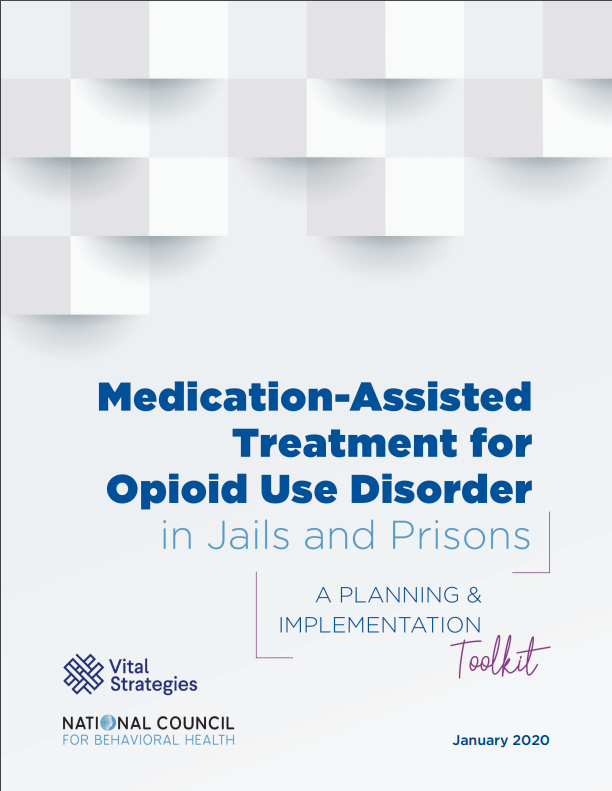Vital Strategies and the National Council for Behavioral Health have developed a toolkit to help jails and prisons implement and expand access to medications for opioid use disorder, such as methadone and buprenorphine, for incarcerated people struggling with opioid dependence.
To reduce vulnerability to opioid overdose and provide quality care for incarcerated individuals with opioid use disorder, the National Council, in partnership with Vital Strategies and faculty from Johns Hopkins University, developed a new resource guide titled: Medication-Assisted Treatment for Opioid Use Disorder in Jails and Prisons: A Planning and Implementation Toolkit with funding support from CDC Foundation and Bloomberg Philanthropies.
People who have been incarcerated are up to 100 times more likely than the general public to die from overdose in the weeks following release from incarceration. Despite high rates of opioid dependence among justice-involved individuals, very few jails and prisons offer access to these medications, which can protect against the risk of death.
Expanding access to methadone and buprenorphine across settings, including jails and prisons, is a top priority for Vital Strategies’ overdose prevention work. We look forward to partnering with state and local governments to ensure these lifesaving medications get to the people who need them.
Recent Abstracts
Prioritizing Evidence Gaps: Air Pollution and Health Impacts of Climate Action
Raising Alcohol Taxes to Reduce Harm: Fact Sheets for Brazil
How the Alcohol Industry Steers Governments Away From Effective Strategies to Curb Drink…
Analysis of the Efficacy of Alcohol Industry-Sponsored Drink-Driving Campaigns
Messaging Recommendations for Effective Road Safety Campaigns: Lessons From Formative Research for Drink…
Testimonials: Personal stories that have the power to save lives on the road
Knowledge, Attitudes, and Practice Study on Lead Poisoning and Pollution in Indonesia
Improving Civil Registration and Vital Statistics Systems in French-Speaking Countries: Opportunities and Challenges
Strengthening the Civil Registration and Vital Statistics (CRVS) System in Colombia
Estimation of the direct and indirect costs attributable to alcohol consumption in Brazil
